Life Always Wins
When you approach the volcano from the interior, you first descend along impressive basalt rock formations. These rocks bear the traces of volcanic activity from millions of years ago. Trees and shrubs now grow on the narrow ridges. Looking at these formations, you realize how incredibly powerful life on Earth is. What was once a brutal, destructive force now forms the foundation for new life.
Ground Control to Major Tom
After descending the basalt rocks, I arrive at the Plaine des Sables — a kind of rock desert formed by the collapse of basalt formations due to geological activity. This process created a vast plain of rubble. The red color of the rocks found here is unique, likely the result of oxidized minerals such as iron oxide.
The first time I passed through, under a scorching sun, I knew I wanted to return someday in mistier weather. That chance came later, when I climbed the plateau again with two friends. The mist, followed by the breaking sun, created otherworldly scenes.
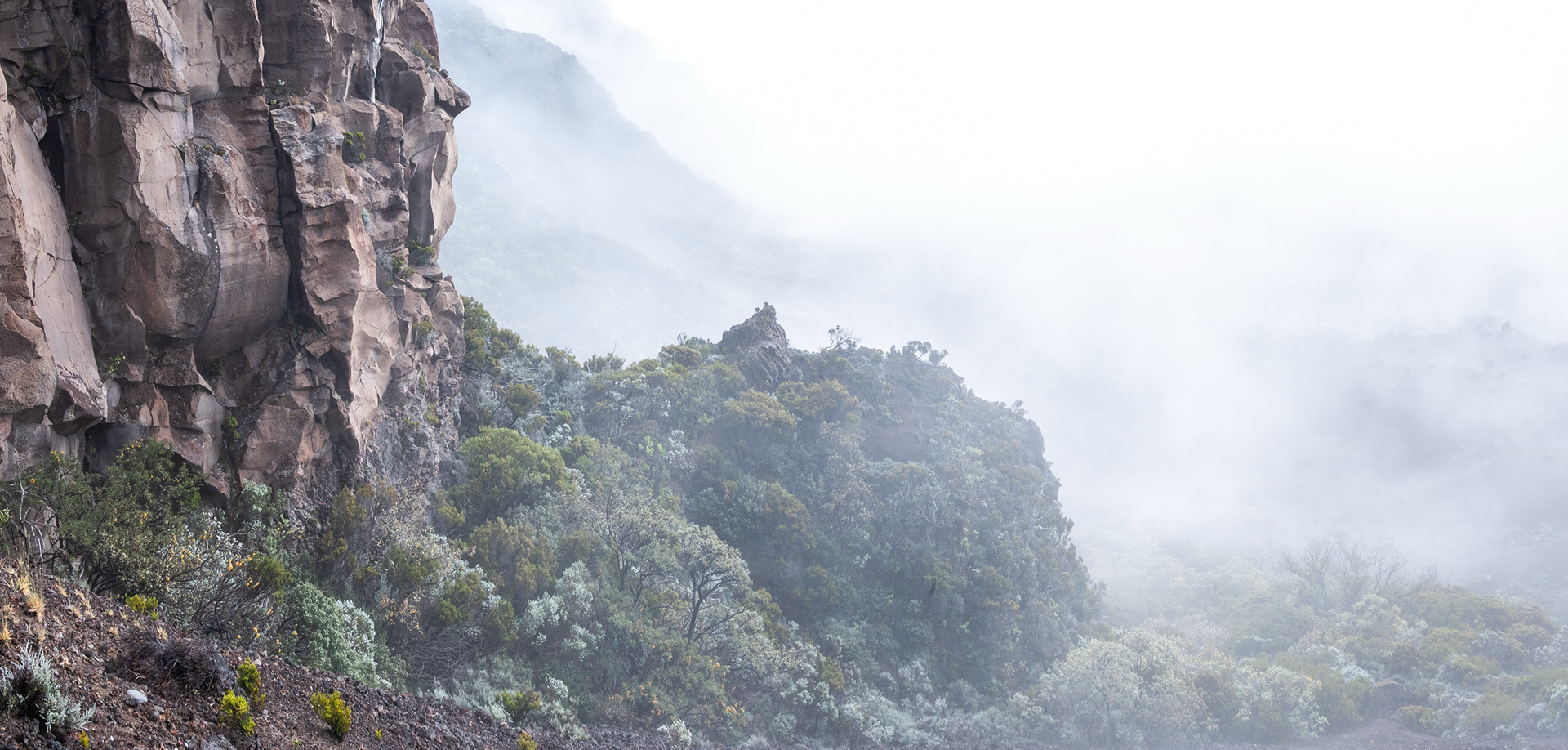
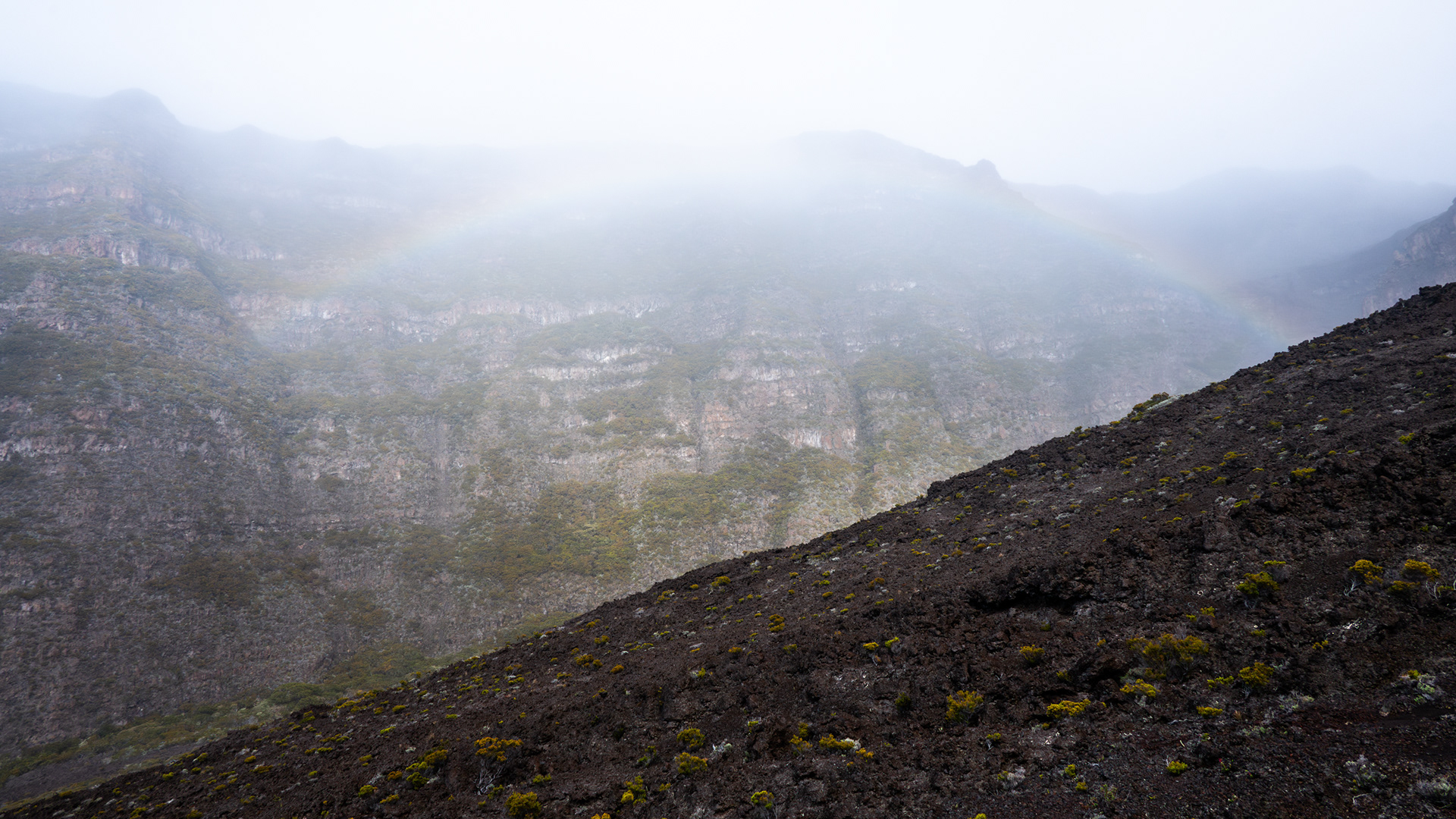


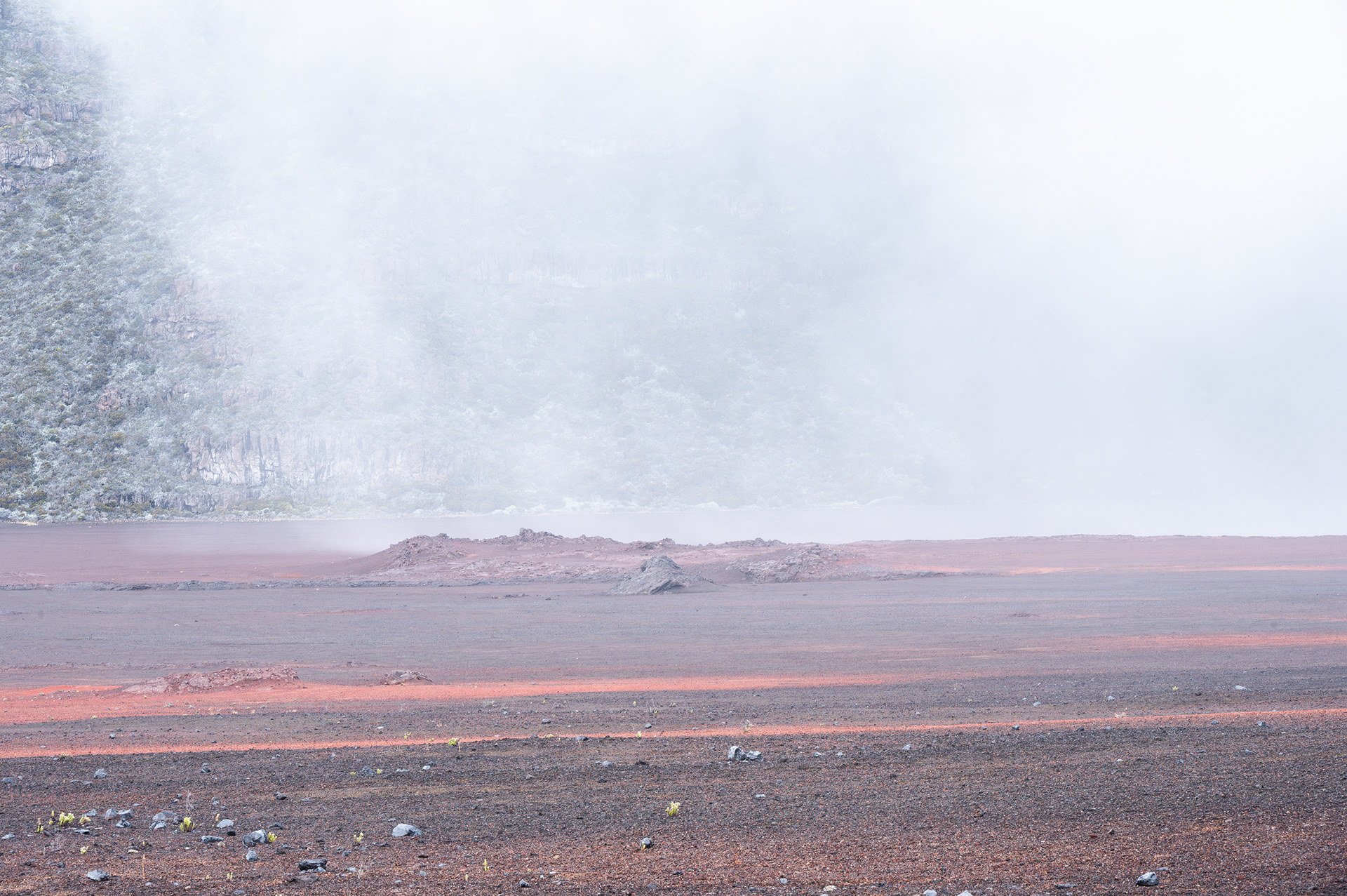

The Scars of the Earth
After the Plaine des Sables, the fields of solidified lava appear. Here, life consists of sparse shrubs and, mostly, countless ferns. You can gauge the age of the lava flow by the vegetation: ferns arrive first, then dwarf shrubs, and only later larger shrubs and trees.
There are two distinct types of solidified lava: grainy black and polished dark grey. We don’t climb the actual volcano due to the tourist crowds. Unlike most visitors, we walk alongside the volcano, toward the craters of more recent eruptions.
The landscape here has a Mars-like feel. Apart from the crunching of stones beneath our shoes, it is deathly quiet. What an alienating experience.
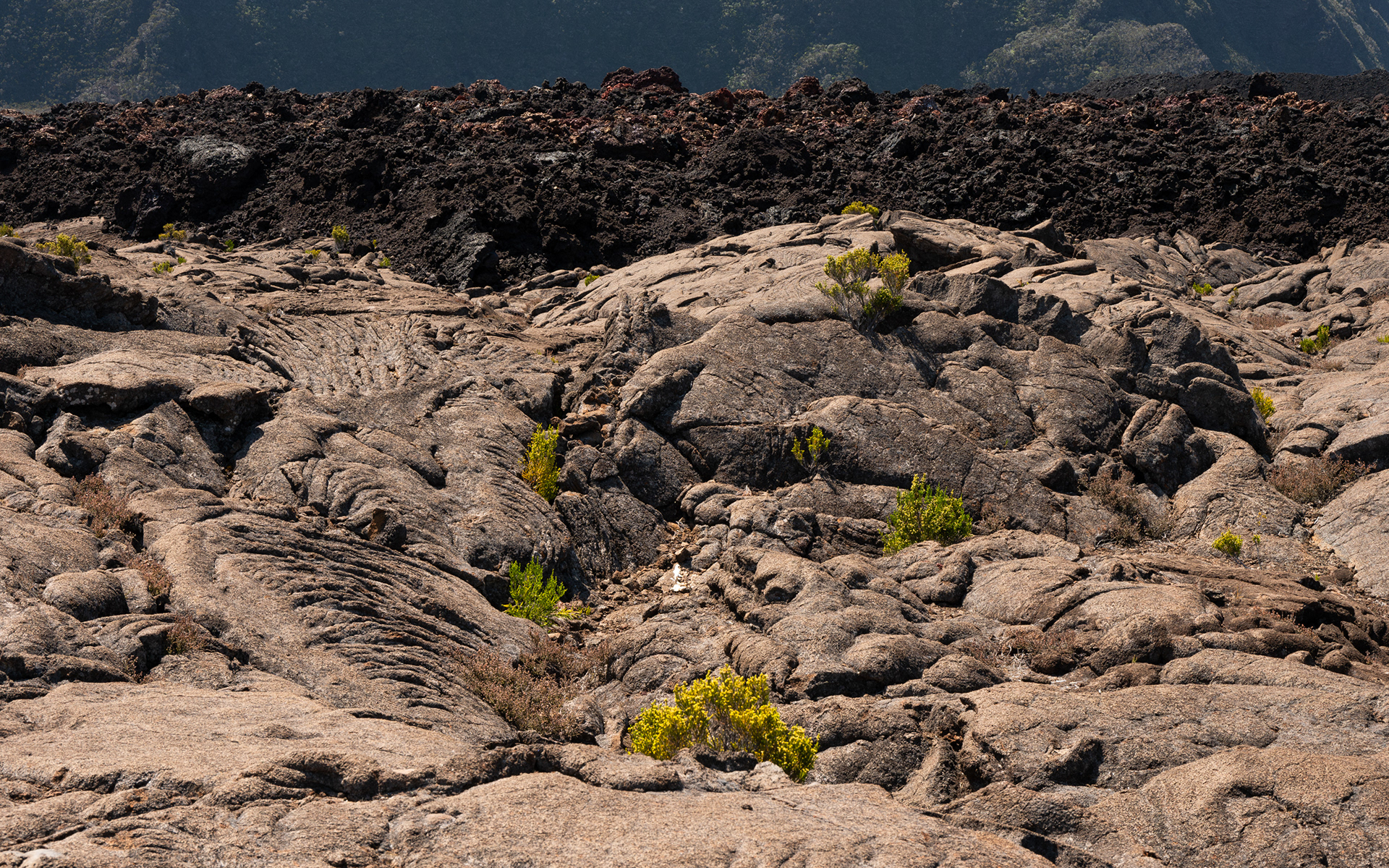
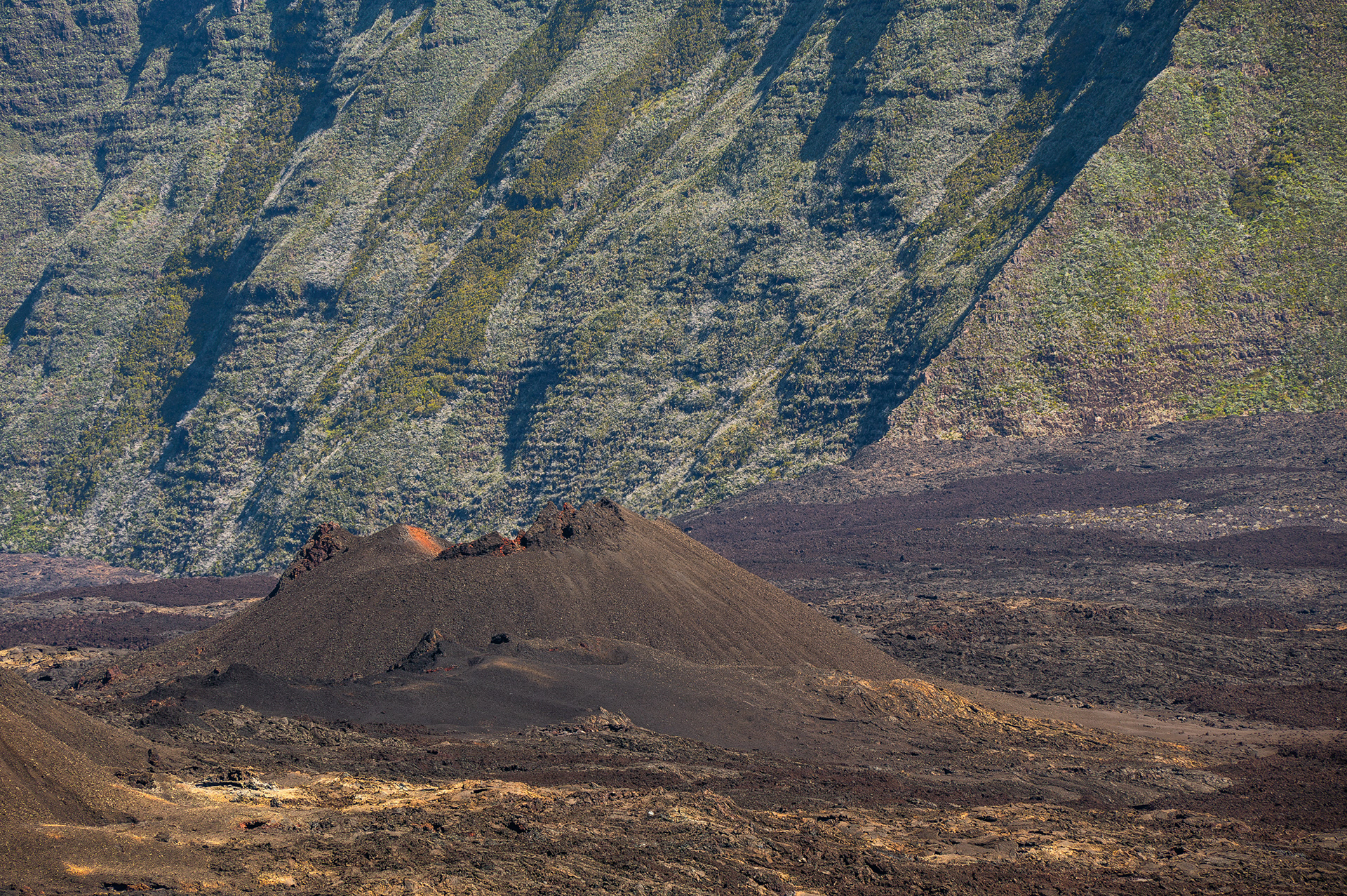

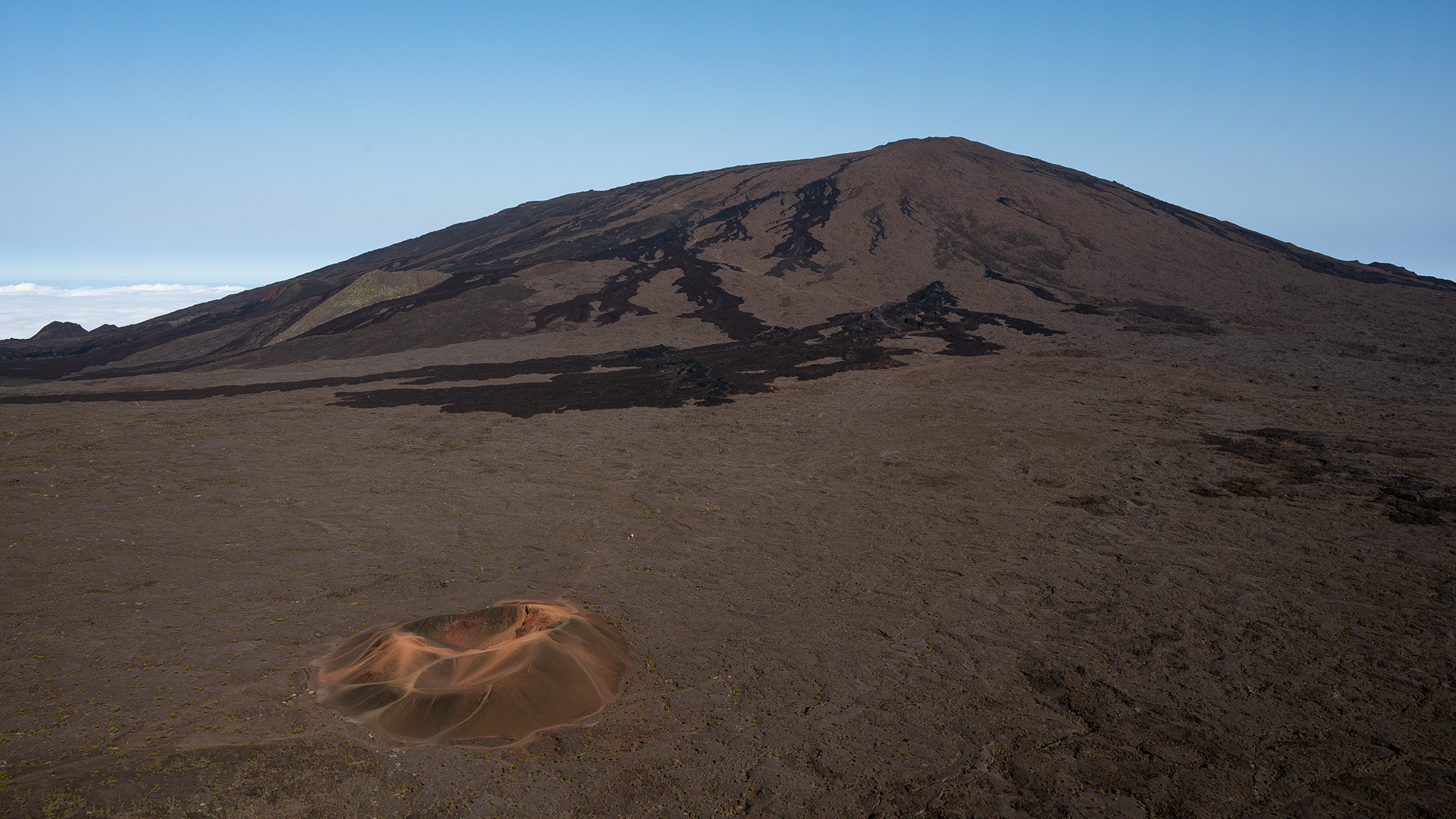

As beautiful as the volcano is, its destructive power should not be forgotten. Since 1640, there have been 253 recorded eruptions. Most of them, aside from causing material damage, have not been too serious. The southern part of the island remains virtually uninhabited due to the constant risk of lava flows.
In 1977, a lava flow stormed the village of Sainte-Rose. Miraculously, the village church remained standing, even though lava had encircled the building. Since then, the church has been called Notre-Dame des Laves, and many believe that Mary protected it.
I’ll conclude with a view from above—one that beautifully illustrates the resilience that follows an eruption: shrubs sprouting in the grooves of the old lava flow. New life—it can be incredibly beautiful.